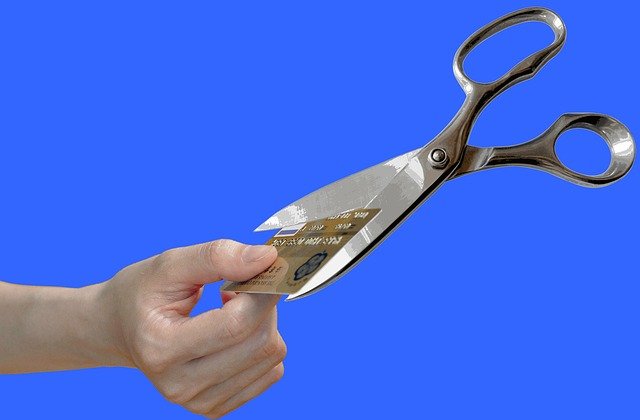Loan options for bad credit: how to obtain financing even in 2025
Securing financing with poor credit remains challenging, but 2025 brings expanded opportunities through alternative lenders, improved technology, and evolving lending criteria. While traditional banks maintain strict credit requirements, numerous specialized lenders now offer viable solutions for borrowers with credit scores below 600, making financial assistance more accessible than ever before.

Understanding Credit Challenges and Loan Eligibility in 2025
Credit scoring models continue evolving, with newer systems considering additional factors beyond payment history and credit utilization. FICO Score 10T and VantageScore 4.0 now incorporate trending data, examining whether credit behavior improves or deteriorates over time. This benefits borrowers showing recent positive financial habits despite past credit issues.
Most traditional lenders still require credit scores above 650 for standard loan products, but the definition of “bad credit” varies significantly. Scores between 580-669 are considered fair, while scores below 580 typically classify as poor credit. However, many alternative lenders now work with borrowers having scores as low as 500, particularly when other compensating factors exist.
Alternative Lending Options Beyond Traditional Banks
The fintech revolution has created numerous lending platforms specializing in bad credit loans. Online lenders like Avant, OneMain Financial, and LendingPoint utilize sophisticated algorithms that consider employment history, income stability, and banking patterns alongside credit scores. These platforms often provide faster approval processes and more flexible terms than traditional institutions.
Credit unions represent another valuable alternative, often offering more personalized service and flexible lending criteria for members. Many credit unions participate in the CDFI (Community Development Financial Institution) program, specifically designed to serve underbanked communities. Peer-to-peer lending platforms also continue growing, connecting borrowers directly with individual investors willing to fund loans.
Key Factors Lenders Consider for Applicants with Low Credit Scores
Beyond credit scores, lenders increasingly evaluate debt-to-income ratios, employment stability, and residual income after monthly expenses. Borrowers with consistent employment history, even with lower credit scores, often receive better consideration than those with higher scores but irregular income patterns.
Collateral significantly improves loan prospects for bad credit borrowers. Secured loans using vehicles, savings accounts, or other assets as collateral typically offer lower interest rates and higher approval odds. Some lenders also consider co-signers with strong credit, though this requires careful consideration of the risks involved for both parties.
Strategies for Improving Financial Profiles Before Applying
Credit repair efforts can yield quick improvements when focused on specific areas. Paying down credit card balances below 30% utilization ratios often increases scores within 30-60 days. Disputing inaccurate information on credit reports through official channels can also provide rapid score improvements when successful.
Building positive payment history with alternative credit products helps establish creditworthiness. Secured credit cards, credit-builder loans, and authorized user arrangements on family members’ accounts all contribute to improved credit profiles. Some newer services also report rent and utility payments to credit bureaus, helping borrowers establish positive credit history through regular monthly obligations.
Typical Loan Costs and Provider Comparison for Bad Credit Borrowers
Bad credit loans typically carry higher interest rates and fees compared to prime lending products. Personal loans for borrowers with scores between 580-669 generally range from 18-35% APR, while those with scores below 580 may see rates from 25-36% or higher. Origination fees commonly range from 2-8% of loan amounts.
| Lender Type | APR Range | Loan Amounts | Key Features |
|---|---|---|---|
| Online Lenders | 18-36% | $1,000-$50,000 | Fast approval, flexible terms |
| Credit Unions | 12-28% | $500-$25,000 | Member benefits, lower rates |
| Secured Loans | 8-25% | Up to collateral value | Lower rates, higher approval odds |
| Payday Alternative | 28% max | $200-$1,000 | Short-term, credit union offered |
Prices, rates, or cost estimates mentioned in this article are based on the latest available information but may change over time. Independent research is advised before making financial decisions.
Insights on Responsible Borrowing Practices and Risk Management
Successful bad credit borrowing requires realistic assessment of repayment ability and careful loan selection. Borrowers should calculate total loan costs including interest and fees, ensuring monthly payments fit comfortably within budgets. Automatic payment setups often qualify for interest rate reductions while preventing missed payments that could further damage credit.
Avoiding predatory lending practices remains crucial for bad credit borrowers. Warning signs include extremely high interest rates exceeding state limits, upfront fees before loan approval, and pressure to accept terms quickly without review periods. Legitimate lenders always provide clear terms, allow time for consideration, and comply with state and federal lending regulations.
Understanding loan alternatives helps borrowers make informed decisions. Sometimes addressing underlying financial issues through credit counseling or debt management plans provides better long-term solutions than additional borrowing. Emergency assistance programs, employer advances, or family loans might also serve immediate needs without creating additional debt obligations.
Securing financing with bad credit in 2025 requires research, patience, and strategic planning. While options exist across various lending channels, success depends on understanding true loan costs, improving creditworthiness where possible, and selecting appropriate products that support rather than hinder long-term financial recovery.



